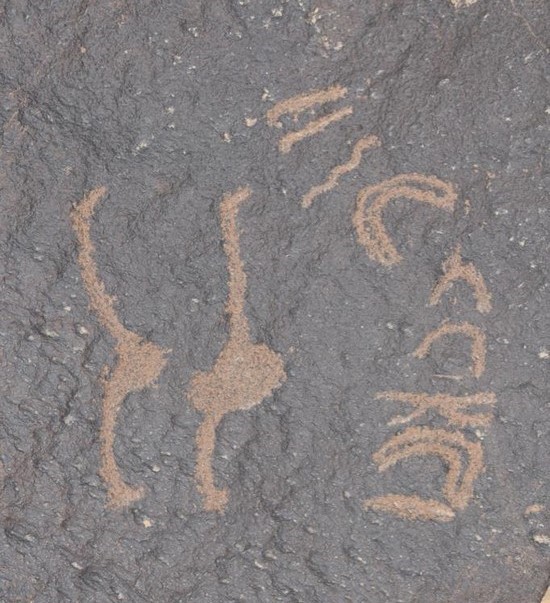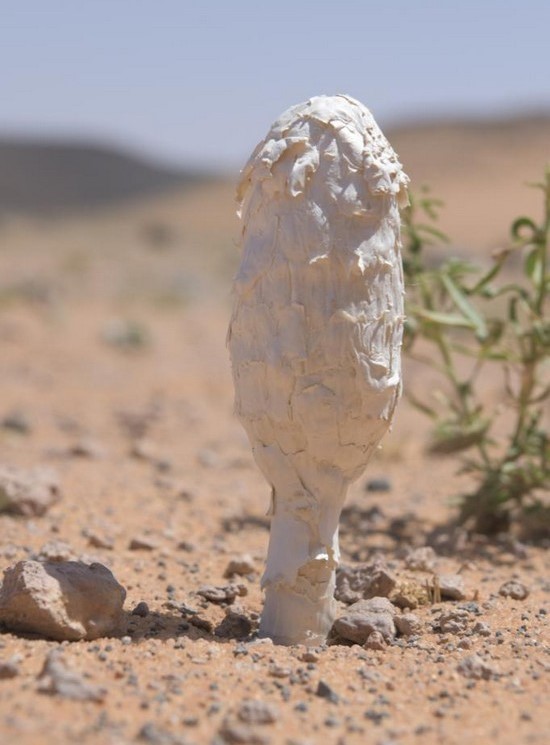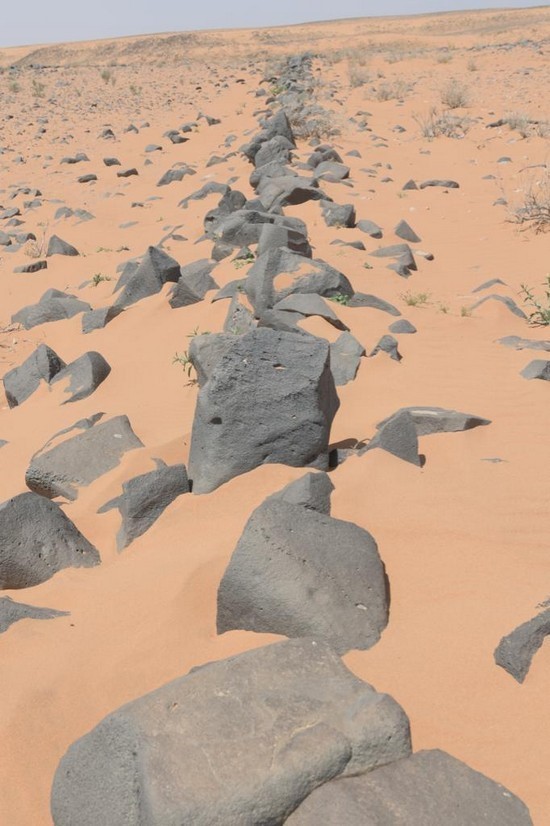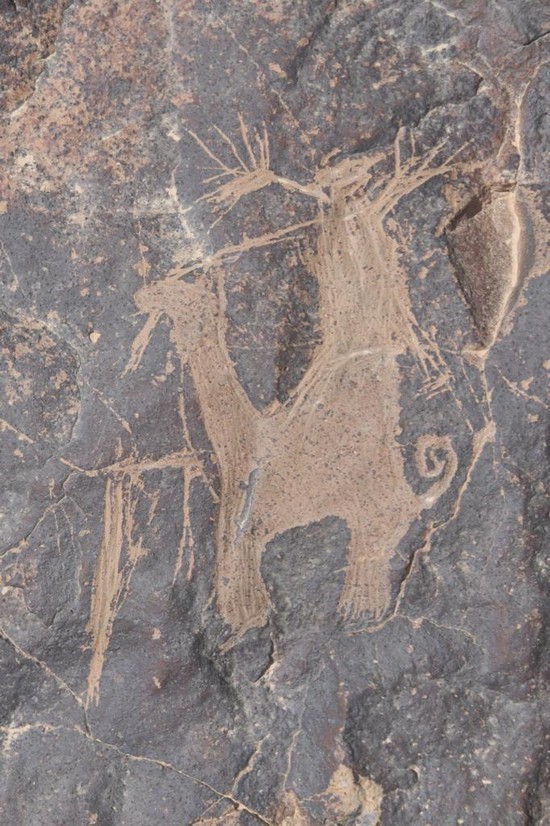To the south and east of Amman,
near Al-Azraq and not far from the Saudi border, are dark, basalt-like mountains without
summits which served as the refuge for the first human to establish
civilization and settle in the Jordanian Badia. The beginnings of secrets and
histories.
اضافة اعلان
After we made camp near the Rajal Dam, we
hurriedly raced the early morning rays towards Qatafi Dam to save time before
the heat intensified. We drove freely on unpaved roads, relying on the driver's
expertise and the convoy leader's instructions to deal with varying elevations
and tough terrain.
 Qatafi
Dam
Qatafi
Dam
After a 40km drive, we reached our
destination, the Qatafi Dam, entering a phase where mobile networks were no
longer available. We relied on our path marking, land navigation apps, and a
Garmin GPS device. After having breakfast on the dam's rubble body, we began
our hike towards the Maytland Mesa Mountains, named by the British pilot who
documented them in 1926.
The vastness of the land, with its abundant
reeds and tributaries, fascinated me due to the purity of its soil, suitable
for making pottery, fine ceramics, and souvenirs. To the north of it, there is
a well with the same name, as well as an imposing hill.
Mesa
mountains
It is a place that arouses the sublime, with
its
dark mountains covered in basalt, and an average elevation difference of
100m between the summit and the base.

Many of the various paths leading to its
peak, among sheets and blocks of stone, impressively do not require special
climbing equipment. At the base, we spotted a paved house or warehouse with a
height not exceeding one meter, meticulously documented by archaeological
surveys.
This mountain is one of 20 scientifically
documented peaks. We climbed six of them, but this one was the most integrated
settlement established approximately 8000 years ago. It may have been the
beginning of civilization, social stability, and tribe-building in this region.
Although it lacks the engravings found on other mountains we climbed along our
14km journey, it holds historical significance.
At the bare summit, we were awestruck again
by the natural scenery and how it was ingeniously formed. If you let your
imagination wander for thousands of years, you might envision volcanic rocks
falling from the sky setting the land on fire. Like the land of torrents and
floods during winter, there is no escape from its grasp except at the edges of
the mountains.

The fortified summit, limited in space, is
surrounded by cylindrical towers, tombs, and rocky barriers, with a single
entrance leading to it. It housed archaeological missions that did not explore
it until a few years ago, due to the difficult terrain and harsh environment.
They discovered stone arrowheads, daggers, grinding tools for grains, in
addition to massive
cylindrical tombs and houses constructed with a blend of
vertical and flat stones without trimming or mud.
Wadi
Subhi
After completing the ascent of six
mountains and walking through a portion of the valley, we completed our journey
to Wadi Subhi, the destination of the shepherds and the solitude of the
Bedouins. It is 100m higher than Wadi Qatafi and offers a different natural
diversity and denser vegetation, entirely distinct from the area we previously
visited.
It is known for the quality and taste of
its
livestock's meat, as well as the production of milk, cheese, and ghee, all
of which are nurtured by the landscape.

The remarkable diversity of the landscape
includes pinkish sand carried by the winds from the Hassam and the Empty
Quarter deserts. In this sandy soil, the desert truffles grow, known for their
effectiveness in treating male infertility when consumed fresh with honey.
Between the hills, we had the joy of riding the sandboard, competing to balance
on it for longer distances.
That night, we set up our camp amid warm
shrubs, sheltering us from the chilly nights of the dry month of May. A saying
goes, "The cold of the valleys melts the mountains," and it is not
far from the herders' pastures. They kindly visited us, checking our tents and
telling us about the place's mysteries, its hidden gems, and the reasons behind
its names. They returned to us the next morning, showing the hospitality of the
desert people, sharing their cheese and local ghee, products of their
livestock.
Al-Shumaysaniat
We bid farewell to our hosts, heading east
in our cars, traversing a dirt road parallel to single and double stone walls
and columns visible as far as the eye can see. They are entirely different from
the historical traps and 100m high fault cliffs, which separate the layers of
earth that separated millions of years ago due to earthquakes and volcanoes,
known as the Fulaq Rift.
We reached "Al-Shumaysaniat," the
three unique mountains in the Pink Plain that extend eastward towards the Saudi
border, 15 km away. They converged with the Mesa Mountains, containing
different engravings from what we found in Mount Qarma in terms of techniques.
They used an engraved style with clear
lines or delineated drawings, followed by carving with dotting. One of the
remarkable depictions was one of groups of ostriches and camels on the same
stone. It seemed to indicate their abundance during that time. there were some
people depicted proudly displaying their horsemanship skills, riding horses
with reins or riding camels, brandishing spears, or dancing with their camels,
as evident from the movement of their legs. It is not unlikely that the art of
sound and the dance of Al-Dhahiya began here, deriving its tones from the calls
of wildlife.
After completing the ascent of the three
mountains, each with a height of 850m, 150m above the base, we accidentally
found a location not far from them with some pottery fragments dating back to
the Roman era, judging from the firing techniques.
Finally, we returned to our starting point,
Al-Azraq Castle, completing an exciting journey full of pleasure and adventure,
covering a distance of about 170km by safari and 46km on foot, in stages of
varying difficulty of walking and driving and spending two nights in the
wilderness under the Badia's atmosphere. We reached places rarely visited by
anyone.
Read more Around Jordan
Jordan News



